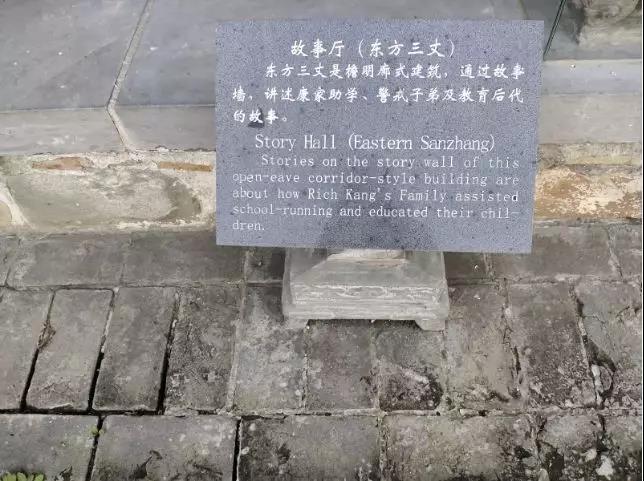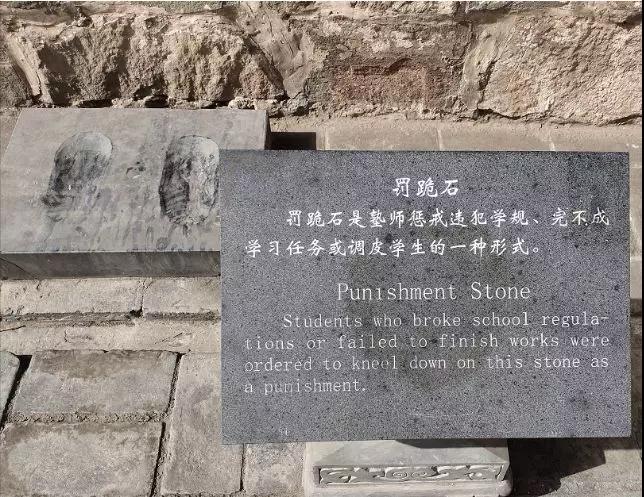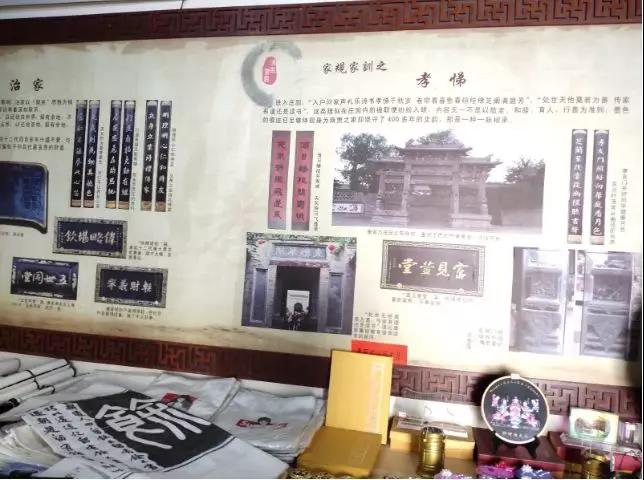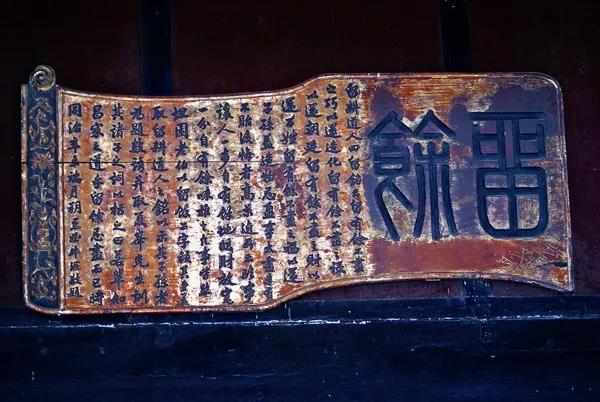Kangbaiwan family is also known as the Heluo Kang family, of which their ancestor Kang Shouxin moved the whole family from Hongdong County, Shanxi Province to Gongxian County, Henan Province (now it is called Gongyi) during the years of Hong in the Ming dynasty. Then, they settled in Kangdian Town. After that, the Kang family farmed while studying hard, entering the business field and passing down the family property to later generations. Gradually, the family thrived in both population and property and prospered during the reign of Emperor Qianlong in the Qing Dynasty as the most wealthy giant in the Central Plain of China. The ingenious Kangbaiwan Manor designed and constructed by the Kang family still maintains its charm after more than 400 years of vicissitudes. Serenely standing beside the Luohe river, it tells people the history of the Kang family, leaving a precious heritage of manor culture for future generations.

The Story Hall at the South Yard (Eastern Sanzhang) This courtyard is the place where the owner inculcated his offspring with the family history in order to make them inherit the family spirit. Now it is also called the Kang Family Study. The couplets outside the door can be interpreted as “we shall be satisfied with things we already have in this little world; the fishes have its own joy, the birds are singing and the flowers are blooming. We can enjoy the life while drinking and reciting.” It reflects the social philosophy of the ancient Chinese scholars who feel contented and stand aloof from worldly success. They believe that people should be satisfied with the place to accommodate themselves and live a life with birds and flowers. Composing poems and living in seclusion is a blessing of life.

There is a Punishment Stone in this courtyard. You can still see the depression on the moss-covered stone. It tells us that the family put emphasis on educating young family members, and suited the teaching to the ability of the pupils. On the wall are paintings about twenty-four stories of filial piety. Tourists who walk into the courtyard will stand for a long time before the stone.

Entering the Kang Family Study, the reporter met Kang Jianhua, a descendant of the Kang family. He is a 62-year-old hale man in the scholar style. He is pointing to the “Kang Family Instructions” and explaining the contents to tourists. The family instructions tell people to embrace losses when making friends with others, make a concession in dealing with affairs, be frugal in daily use and be grateful in handling problems. We should prefer exposing our own shortcomings than making others be wary of our dishonest deeds. Considerate personality of ancestors shall be handed down to later generations because it is more important than cunning.

When you raise your eyes, you’ll see other couplets, which can be interpreted as “Entering the manor to know the background of the family, you’ll find that the family builds itself with education and filial piety for years; outside the curtain, the courtyard brims with a raft of flowers.” “Honesty is the key when getting on well with others while education facilitates family inheritance.” The couplets carved in the manor will strike your eyes, which include the principles one should follow, such as respecting the elderly, harmony, educating people, and doing good deeds. The traces of ink are enough to prove a merchant family’s cultural essence they have adhered to for more than 400 years. It can be truly called a heritage.

In the Kang Family Study, not only a large number of cultural and creative products are displayed, but also books about the Kang family. Visitors can know stories of the Kang family while buying souvenirs. Many tourists can’t tear themselves away from two books, “Kang Bai Wan” and “Plaques and Couplets Collection in Kangbaiwan Manor”.
The “Plaques and Couplets Collection in Kangbaiwan Manor” contains the graceful and time-honored culture in the Ming and Qing Dynasties, during which the fields of plaque and couplet prospered. They are the essence of Kangbaiwan Manor, scattering around in the manor and displaying the charm of Hello Culture. The plaques and couplets in Kangbaiwan Manor have the functions of depicting landscapes, lyric, education and persuasion. They have already been integrated with the manor and become an integral part of the manor culture.
There are many tourists from other places. Kang Jianhua carefully stamped on the flyleaf the book with the Kang family’s special seal and sent sincere blessings to the tourists. Some tourist said, “It’s not easy for us to come here and visit the manor. I’ll bring some souvenirs for my children so that they can be inspired by this culture. I hope that this culture can be inherited by future generations.”
Liuyu Fan (Liuyu means charity), Liuyu Ruler, Liuyu Rubbing, Kang Family Instructions, Liuyu Paper Cutting, etc., all of these reveal the secret of the Kang Family who has been prosperous for over 400 years and 13 generations.

Kang Jianhua introduced that the “Liuyu” advocated by the family was not empty words. The Kang family spent a lot in receiving Empress Cixi, so they drop the boat under the river by damaging the bottom; they returned the salary back to the imperial court; the head of the family would burn the debts and contracts local people used to borrow money and grains at his birthday; there fully reflects the merits of the family who insisted on being contented with what they had already and leaving endless property to the nature, the imperial court, people and future generations.
In the Kang Family Study, the descendants of the Kang family explained and gave new life to those cultural and creative products. With the batch of tourists coming and going, more people have become the propagators of Yushang Culture. Everyone who has come to Kangbaiwan Manor would say: It is a blessing that the Kang family has a study. Here is a window to understand Yushang Culture.